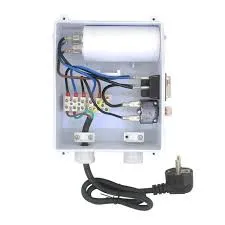The Importance of 20mm Intumescent Strips in Fire Safety
Fire safety is an essential aspect of building construction and design, especially in urban areas where the risk of fire can pose a significant threat to life and property. One critical component in enhancing fire resistance in buildings is the use of intumescent strips, particularly the 20mm versions, which play a pivotal role in protecting door frames and creating effective fire barriers.
Intumescent strips are specially designed materials that expand when exposed to high temperatures, creating a dense, insulated barrier that can help to prevent the spread of fire and smoke. The 20mm intumescent strip is a favored choice due to its optimal width that balances efficiency and ease of installation. When a fire occurs, these strips can expand up to several times their original size, sealing gaps around doors and other openings where flames and smoke could enter, thus buying critical time for occupants to escape.
One of the primary benefits of 20mm intumescent strips is their versatility. They can be installed in a variety of door types, including wooden, metal, and composite doors. This adaptability makes them suitable for use in both residential and commercial buildings. Moreover, their inconspicuous design means they can blend seamlessly with the existing décor, offering peace of mind without compromising aesthetic appeal.
20mm intumescent strip

Additionally, regulatory compliance is a significant factor driving the use of 20mm intumescent strips. Many building codes and fire safety regulations mandate the installation of fire-rated doors and associated hardware in certain building types. Utilizing intumescent strips helps ensure that these doors maintain their fire-resistive properties while contributing to overall safety strategies. By adhering to regulatory requirements, property owners not only protect lives but also avoid potential legal ramifications.
Furthermore, the installation of 20mm intumescent strips is straightforward, making them a cost-effective solution for enhancing fire safety. Many manufacturers provide handy installation guides, and they can often be fitted by contractors or skilled DIYers without the need for specialized equipment. This ease of application allows for quick upgrades and new construction projects to prioritize safety without excessive delays or expenses.
In conclusion, the role of 20mm intumescent strips in fire safety cannot be overstated. With their ability to expand and seal gaps during a fire, they provide essential protection for occupants and property alike. Their versatility, regulatory compliance, and ease of installation make them an indispensable component in modern building safety practices. As we continue to advance building technologies and designs, incorporating fire safety measures like intumescent strips will remain a key priority in safeguarding lives against the unpredictable threat of fire.
-
XIANGFAN Rubber Tape-Ultimate Solutions for All Your Insulation NeedsNewsJun.24,2025
-
XIANGFAN Rubber Tape-Protection for Industrial and Residential ApplicationsNewsJun.24,2025
-
XIANGFAN Rubber Tape: Superior Safety and Sealing for Demanding EnvironmentsNewsJun.24,2025
-
XIANGFAN Rubber Tape: Reliable Solutions for Every Electrical ChallengeNewsJun.24,2025
-
XIANGFAN Electrical & Industrial Tape: Powering Reliability Across IndustriesNewsJun.24,2025
-
XIANGFAN Electrical & Industrial Tape: Excellence in Every ApplicationNewsJun.24,2025
